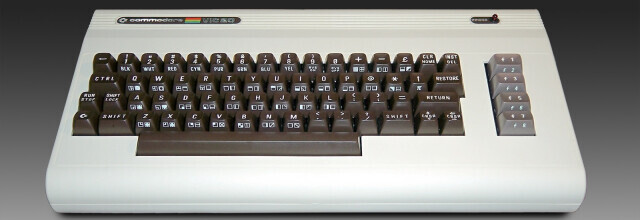The omnipresence of microcomputing nowadays doesn’t surprise anyone anymore. But there was a time, not so long ago, when all this was in its infancy, and when we were not talking about megabytes, let alone gigabytes. I’m talking about 1983. The year I got acquainted with microcomputing.
I had a keen interest in all things technological, electrical and electronic, and I kept abreast of the latest developments in the field, but I had no idea that we were on the threshold of a new era.
One day, I was walking in a department store when I came across a device in the toy section that looked like a typewriter keyboard. Intrigued, I looked at the packaging from every angle and read the brief description of the object. I don’t remember the price, I only remember that I was curious enough to buy the object and I hurried home to plug it into the television set.

Yes, this was my first microcomputer, the Commodore Vic 20. The VIC-20 was an 8-bit personal computer that was built by Commodore International with 5 kB of RAM (of which 3.5 kB was for BASIC applications) and a CPU based on a MOS 6502 processor. It consisted of a rather massive, thick, plastic keyboard that was plugged directly into the television set.
Then, the magic happened.
Almost instantly, the screen displayed a blinking cursor in the upper left corner, and the magic word « BASIC ready » was displayed. I had entered the era of BASIC programming. I didn’t know what it was all about. I frantically flipped through the few pages of the manual and started typing the few lines of code, the now famous, « Print hello ». And indeed, before my amazed eyes, the computer displayed « Hello ».
I let you imagine my growing interest when I try a Print 1 + 1… These first few hours, because yes, they were a few hours that I spent with this computer, quickly turned into a few tens of hours, then into a few days, or rather a few nights. Nights spent typing lines of code to try to make this machine do something intelligent. This was no easy task, given the extremely small size of the RAM. But at that time, we already had access with the Basic language to color management, sound management and some primitive graphic functions whose interest and complexity was inversely proportional to the size of the pixels.
It is however with this machine with extremely reduced possibilities, that I wrote my first BASIC programs allowing me to calculate the position of the satellites of Jupiter and to make an animated graphic representation of it (Whaoooo!), because at the time, I was impassioned of astronomy. The first days were quite painful, because there was no mass storage on these computers, neither hard disk, nor even a floppy disk drive. So I had to type the programs, and especially retype them when I turned the machine on again. The following days, I went back to the store where I had bought it, and bought for a rather important sum an audio cassette player which was used as mass memory.
This first contact with micro-computing is an imperishable memory, a feeling of discovery that none of the progress in computing has made me feel since. I realize that I lived through a historic time, I was far from suspecting that I was going to make a career out of it.
Shortly after the Commodore Vic 20, the Commodore 64 was released, which had much more RAM and possibilities. This was the beginning of a long series of microcomputers, I’m talking about the pre IBM PC period, with historical machines like the Amiga or the Tandy TRS-80 for example, on which I passed my BTS in computer science!